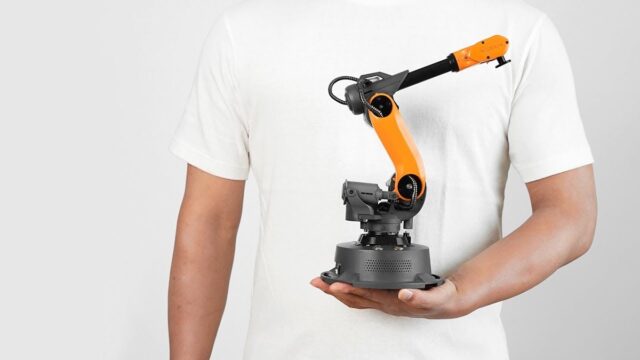There is an upsurge in the demand for industrial robots and buyers are now considering available space as a key factor when making a purchase. Bigger is not always better in the machine world. Small industrial robots are therefore gaining popularity owing to their size and effectiveness. Companies are working to put industrial robots on the palm. The smaller the better. The idea is to have industrial robots that function attached to the ceiling, on tabletops, and other available spaces in the office.
What They Do
Contents [show]
Small industrial robots are automated and programmed to perform a wide range of functions in the manufacturing space. These robots utilize up to six axes to carry out the assigned tasks. With high levels of endurance, precision, and speed, industrialists are finding them hard to ignore. These machines are becoming irreplaceable because of the quality of the finished products. Some functions include:
1. Assembly and disassembly
These robotic tools bring value to the assembly line with amazing precision. They might work alongside other workers or entirely on their own.
2. Pick and Place.
Picking and placing is a common task in the manufacturing industry. Being small, small industrial robots perform an excellent job in picking and placing.
3. Packaging and Labelling.
Complicated as it sounds, this is a common task in manufacturing that is executed well using the small industrial robots. The feature that is striking about these robots is the absence of external controls that further minimize space and increase its effectiveness.
4. General Material Handling
The programs available in the robots allow for the performance of general errands like handling materials within the work premises. Such include lifting and stacking different materials as required.
You are probably contemplating acquiring one or several small industrial robots. You are about to make a brilliant choice. You will not only increase the overall productivity but also revolutionize the entire workplace. Quality final products will ultimately lead to more sales. The use of robots will also reduce labour costs by a large margin making production more affordable.
What to Look Out for When Buying Small Industrial Robots
So what parameters are we supposed to look at when buying a small industrial robot? We have provided a breakdown of what you will consider.
1. Accuracy
How close will the robot get to the commanded position? The difference between the actual position and the commanded position gives the accuracy of the robot. The use of internal sensing technology has been cited as a major milestone in increasing accuracy in industrial robots. While accuracy as a result of varying speed and the payload, be sure to select a robot that has the highest accuracy.
2. Repeatability
This refers to the ability of the robot to return to the programmed position. Often confused with accuracy, repeatability has to do with how well the robot will return to the original position with as a small margin as possible.
3. Payload
This is the carrying capacity of the robot. Depending on the work you intend to assign the robot, selecting a robot with the right payload will be a wise decision.
4. Speed and Acceleration.
These two factors are closely related but distinct in how they affect the functionality of the machine. Speed is the measure of how quickly the robot can position the end of the arm where it’s required. This is an important consideration when acquiring a robot; you don’t want one that takes forever to straighten the arm and hence slow the entire production process.
Acceleration of a robot refers to the movement of the axis on any side to facilitate movement. It is equally important to pick a robot that has fairly good acceleration. This will contribute to the overall performance of the machine.
5. Number of Axes
This should have ideally been at the top of the list but with small industrial robots, this might not be a huge consideration. The robot being small in size might be designed to make use of one axis.
Conclusion
Small industrial robots are changing the manufacturing scene and industrialists cannot keep calm. This article has explored the applications of a robot and the parameters that will guide you in deciding on the acquisition of a small industrial robot.


